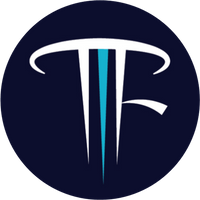Tunnels are Roads 2.0
February 15th, 2019Elon Musk started the Boring Company to dig tunnels. Does this make sense to do? As one of the worlds most famous engineers, why would anybody focus on this. Elon drives through L.A. The traffic is not good. The amount of time cars spend moving slowly or stopped is high. A tunnel underneath, that had no traffic in it, would be better right? But what about emissions? Internal combustion cars would pollute and kill people in the tunnel with carbon monoxide. However electric vehicles would not. So I guess prior to now tunnels for cars would not have made sense. But with the addition of electric vehicles, maybe they do now. Just because cars can drive through tunnels, does that mean they should? Well, for one, it would not be as scenic. You will be driving through a tunnel and it will look like that. So there is some trade off. The addition of screens to vehicles where you can watch YouTube or Netflix may help distract people from that assuming you can get wi-fi in the tunnel. But what happens when a vehicle malfunctions and blocks the tunnel? That is a good question. The design of the tunnel must account for access points along the way which can allow electric tow vehicles to remove broken down cars. But perhaps the tunnels could have an electrified road that attempts to leave cars fully charged upon exit. This should minimise malfunction due to running out of fuel. So we would need tunnels with wi-fi and emergency access points and cars with screens in them are better. There would also need to be some flood gates as well I would think. Points of entry to the tunnels blocked from excessive rain, tsunami's or other problematic weather. And in the case of flood gate failure, you would need some type of pumping system to drain tunnels out. One problem in Ontario, other Canadian provinces and U.S. states is that we need to clear snow off roads for some months of the year. This leads to pot holes in the road. Workers need to be dispatched to fix these potholes or cars get damaged. The roads can get quite bad and require a maintenance budget to plow and repair. Salt on the roads is another issue. I wont speak about the degradation of the roads or the effects from run off on soil and ground water. But from a maintenance perspective not paying people to drive around putting salt on roads will save you the cost of the labour, vehicles maintenance and cost of copious amounts of salt. Tunnels would likely require a much smaller maintenance budget as they would be shielded from snow and other atmospheric conditions. While I admit I probably am not seeing all the costs associated with maintaining a tunnel, I am definitely seeing some savings which will either subsidise, match or even generate profit from tunnel implementation. The costs of vehicle maintenance may pleasantly be reduced as the tire wear becomes negligible due to sleds or skis which bear the brunt of the wear from the tunnels. No pot holes to hit. No tires puncturing or exploding. The safety is improved in cars capable of talking to each other in real-time and driving autonomously to your destination. Not every vehicle will be capable of driving in the tunnels. ICE cars definitely not. But cars that do not communicate according to protocol will not be safe in the tunnel. Not as safe for sure as ones that do. It would appear that Tesla is inventing and setting this standard/protocol with the vehicles they are producing and their camera, radar, internet connectivity capabilities. So what about costs? Well, costs are something to be considered. However, using these tunnels on a pay per use, subscription etc. could generate money just like toll roads. Not everybody can afford a Tesla to take these tunnels, but if they could, they may do so for the experience, convenience, expedition, entertainment value etc. Perhaps Tesla delivering fleets of cars to rental companies is the beginning of this process. Perhaps tunnel entry points start springing up around Avis car rental locations. Tesla doesn't have the plan of letting vehicles sit on car lots at car dealerships. They will have a limited number of loaners and test drive vehicles, but other than that, I believe when too many Tesla's exist, when demand subsides, Tesla will still have factories pumping out thousands of cars per day and those cars could be monetised through usage. Eventually, the abundance of cars Tesla produces will put Tesla in a position where they can rent the cars out and be much more profitable than Avis because they are getting cars at $0 markup. There is a lot of FUD circulating the internet about demand running out for Tesla vehicles. So let's assume that Tesla goes into a worst case scenario and has 0 demand to purchase their vehicles. Freemont plant would be producing 1000 cars per day. If each vehicle gave 24 x 1 hour rides per day, that is 24,000 new potential users every single day. The increase in capacity for people using these cars would grow by 1.6 billion 1 hour trips each year. If Tesla were to focus on adding that type of capacity to a tunnel system at that rate, he could provide upto 1.6 billion trips per year through tunnels. Now let's assume Tesla can produce a vehicle for an expense of $28,000. Whether they can or not right this moment is debatable, but I just need a number to go by. That number was based on the long range model which is working it's way toward lower cost so it is possible that $28,000 could be lower or higher depending on how correct that article was. But for illustration purposes, let's assume Tesla makes the vehicle for $28,000 doing 1000 vehicles/day for 365 days of the year. They could add upto 365K cars to this system per year. If each car were charge an average of $10/hr per trip, the $28,000 car will pay for itself in 2,800 trips. To ensure the car pays for itself in the first year, each car would need to average 7.67 hrs/day. If this number can be maintained (or exceeded) the upfront costs of the cars will be redeemed within a year and become profit generators thereafter. That would be the cost of usage for vehicle in a tunnel. But that only pays for the cars, not the tunnel. Elon expects tunnel costs to be $10 Million/mile. I think the price to ride the tunnel would more likely be per hour. So let's assume the cars can go 120 miles in an hour. The cost of that tunnel would be $1.2B. If the charge to use the tunnel was an additional $10/one hour, the tunnel would become profitable after 120M trips. If each car made 2,800 trips per year 120M trips @10/hr could be achieved by less than 43,000 vehicles making 2,800 trips. Therefore, the expectation to drive upto 5 adults through a 1 hour tunnel 120 miles would be $10 for the Tesla and $10 for the tunnel = $20. That could be $20 for a single occupant or $5/person for carpool of 4 occupants. If you drive a Tesla yourself, you would save the $10/hr car rental fee and only pay $10 tunnel usage fee. Now just for fun, let's compare this to air travel. If I were to go to Florida, it would be a 2,155.8 mile trip for me. I can get flights from Syracuse for $100/person one-way if I find a good deal. By the time I check my luggage, get on the plane, fly, disembark and collect my luggage, it would take me 2 hours to the airport + 3 hours for the flight + 1 hour for baggage. So with a flight, I am looking at 6 hours and $400 for 4 people. Assuming taking a tunnel is an option for the $10/hr tunnel cost, I could get there in 18 hours for $180. More likely 21 hours with stops. It would cost me $360 if I didn't drive a Tesla to pay by the hour. But I do drive a Tesla and so when I get there, I would not need to rent a car which would save me additional money. It's a long trip, but if I could watch Netflix the whole time, or play on my tablet/phone it wouldn't be awful. If you didn't drive a Tesla, you may be able to get a bulk hourly rate. If you recall, they only need 7.67 hrs/day to break even. So if Tesla rented vehicles for $100/day they could be profitable and if that is the case, instead of paying $360, it would be $280. With that, you could drive down and have a full day rental before you even paid for the cost of a flight. With Tesla delivering tens of thousands of cars per quarter, the supply of vehicles capable of going through tunnels is ever-increasing. The appeal to get people to their destinations more autonomously and expeditiously would merit a premium toll. It is possible that Tesla could have these tunnels pay for themselves within a year and then be immensely profitable for both Tesla and the Boring company thereafter. Going forward into the distant future. Maybe ICE vehicles become obsolete. Maybe tunnels become the way to get everywhere and inherit the municipal, provincial, state and federal road maintenance budgets. Maybe those budgets decline to nothing saving taxpayers money. Maybe roads are reclaimed for bicycle paths or fields forests or farmland. Maybe we see a restoration in habitat along with a reduction in pollution. It's a nice thought.
Posted In:
ABOUT THE AUTHOR:Software Developer always striving to be better. Learn from others' mistakes, learn by doing, fail fast, maximize productivity, and really think hard about good defaults. Computer developers have the power to add an entire infinite dimension with a single Int (or maybe BigInt). The least we can do with that power is be creative.
 The Limiting Factor
The Limiting Factor Whole Mars Catalog
Whole Mars Catalog